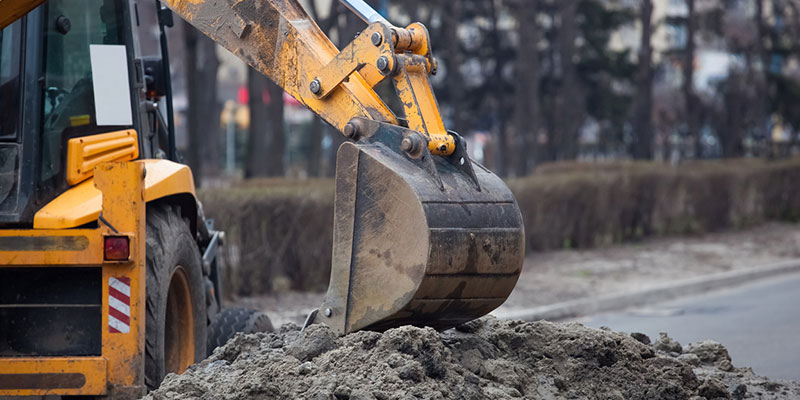Excavating Ohio - Top Excavation Service Providers for Ohio Projects
Excavating Ohio - Top Excavation Service Providers for Ohio Projects
Blog Article
Thorough Exploration: The Scientific Research Behind Superior Excavation Practices
The world of excavation techniques is a domain name where science links with workmanship to unearth the secrets concealed below the earth's surface area. From ancient hand tools to modern-day hydraulic excavators, the advancement of excavation methods has been a testimony to human resourcefulness and technical advancements. However, what really establishes exceptional excavation practices apart is a deep understanding of geological principles, paired with the use of cutting-edge devices and approaches. By discovering the scientific research behind these practices, we can reveal the secrets that exist beneath our feet and appreciate the accuracy and proficiency that enter into every dig.
Evolution of Excavation Techniques
Throughout history, the evolution of excavation strategies has played a critical role beforehand building and construction methods and historical discoveries. From the simple devices utilized by our forefathers to the sophisticated machinery employed in modern-day times, the progression of excavation methods has actually significantly transformed how we come close to various tasks.
In ancient times, manual work with fundamental tools such as shovels, wheelbarrows, and pickaxes was the key approach of excavation. This labor-intensive procedure limited the depth and extent of excavations, usually causing slow-moving progression and restricted accessibility to particular websites. However, as people advanced, so did the techniques and devices made use of for excavation.
The Industrial Transformation marked a transforming point in excavation practices with the introduction of steam-powered equipment. In contemporary times, innovation plays an essential role in excavation, with innovations like General practitioner systems, drones, and 3D scanning enhancing precision and effectiveness in the area.
Duty of Innovation in Excavation

The combination of innovative technology has basically changed the field of excavation, enhancing precision and effectiveness to unprecedented levels - excavating ohio. One of the essential technical advancements that has considerably impacted excavation methods is the use of GPS systems.
Moreover, the development of 3D modeling and simulation software application has streamlined the preparation process for excavation projects. Drivers and engineers can now visualize the entire excavation procedure before beginning, recognizing prospective obstacles and enhancing operations. Combined with this, the implementation of drones in excavation activities has actually promoted airborne studies, volumetric measurements, and site assessments with unparalleled rate and accuracy.
Geological Principles in Excavation
An understanding of geological concepts is essential for making sure the architectural honesty and stability of excavation sites. Geological elements play a crucial duty in identifying the usefulness and security of excavation tasks (septic ohio). One key geological concept to take into consideration is the type of dirt or rock present at the site. Different soil kinds, such as clay, sand, or gravel, have varying levels of security and call for various excavation methods. Cohesive dirts like clay may need added support to prevent collapses, while sandy dirts might be vulnerable to erosion throughout excavation.
Furthermore, the geological structure of the location, including faults, fractures, and rock formations, must be you can try this out thoroughly evaluated to recognize prospective risks and challenges. Excavating near geological fault or unstable rock developments can bring about instability and prospective risks. By conducting extensive geological surveys and evaluation, designers and excavators can establish methods to minimize risks and make certain the successful completion of excavation projects. Ultimately, integrating geological concepts right into excavation methods is vital for attaining safe, reliable, and sustainable results.

Most Current Tools for Excavation
In the world of excavation techniques, contemporary advancements in tools have transformed the effectiveness and accuracy of excavation processes. One of the most up to date devices making waves in the sector is using drones equipped with advanced imaging innovation. These drones can give thorough airborne surveys of excavation sites, using real-time data on topography and prospective threats. This details help in Recommended Site far better planning and decision-making throughout the excavation process.
One more cutting-edge tool gaining popularity is the execution of 3D printing technology for producing personalized excavation devices. This enables the production of specialized devices that are tailored to the specific requirements of a job, enhancing efficiency and reducing downtime.
Moreover, advancements in materials science have resulted in the growth of more powerful and more sturdy excavation devices. excavating ohio. Tungsten carbide-tipped excavator accessories, for instance, offer exceptional efficiency in challenging ground problems, boosting efficiency on-site
Scientific research's Influence on Excavation Practices

In addition, scientific research study on dirt auto mechanics and geotechnical engineering has given beneficial insights into dirt behavior, permitting excavation experts to make informed decisions concerning excavation approaches and soil stabilization strategies. In general, science proceeds to drive development and improvement in excavation practices, making excavation tasks more efficient, economical, click here for more info and sustainable.

Final Thought
To conclude, the evolution of excavation techniques has been substantially affected by improvements in modern technology and a deeper understanding of geological concepts. The newest devices and tools used in excavation have actually boosted effectiveness and accuracy in the area. The application of scientific expertise has considerably enhanced excavation methods, causing extra lasting and efficient techniques for digging deep into different sorts of materials.
In the realm of excavation techniques, contemporary developments in devices have changed the efficiency and precision of excavation procedures. By leveraging scientific principles, the excavation industry has been able to substantially enhance efficiency, accuracy, and safety and security in excavation procedures. GPR allows excavation teams to non-invasively check and map subsurface frameworks, utilities, and potential hazards, allowing them to plan excavation jobs with higher accuracy and minimized threat of accidents.
Furthermore, clinical research study on soil mechanics and geotechnical engineering has supplied useful understandings into dirt actions, enabling excavation professionals to make informed choices pertaining to excavation techniques and soil stabilization techniques. On the whole, science continues to drive technology and improvement in excavation techniques, making excavation jobs extra efficient, cost-effective, and sustainable.
Report this page